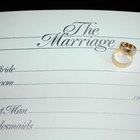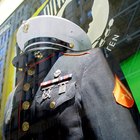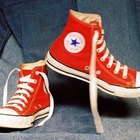
Jetta Productions/Lifesize/Getty Images
School dress codes have been a hotly contested topic for a generation. The National Center for Education Statistics states that during the 2009-2010 school year, 19 percent of American public schools required uniforms, while 57 percent enforced strict dress codes. Yet the data on whether the advantages outweigh the disadvantages remains mixed.
Advantage: Safety
One of the strongest arguments in favor of school dress codes is that they promote safer schools. An often-pointed-to statistic claims that the Long Beach, California, school district saw a 50-percent reduction in both fights and muggings and a staggering 74-percent decrease in sexual offenses one year after the district implemented a uniform policy. Other schools also claim decreases in violent behaviors following the adoption of strict dress codes or uniforms. However, some experts are hesitant to credit dress codes or uniforms for the results. In a 2011 article on Education.com, the American Civil Liberties Union’s Loren Siegel points out that Long Beach’s uniform policy was adopted in tandem with a number of new safety policies including increased hallway supervision. It is difficult to determine which parts of a comprehensive safety policy actually do the most good.
Advantage: Order
Another common argument in favor of strict dress codes states that the policies promote order in the schools. Clothes are less distracting, helping students concentrate on their studies. In addition, dress codes prepare students for the workplace, according to educator Dr. Larry Wilder in an article for the Fresno Pacific University School of Education. In the same article, however, educator Dr. Scott Key points out that today’s workforce is more diverse than ever before. While factories and traditional offices might enforce dress-code policies, the explosive growth of the tech sector, telecommuting and home-based businesses allow increasing numbers of adults to wear whatever they please.
Disadvantage: Discouraging Freedom of Expression
A major argument put forth by opponents of school dress codes is that they discourage freedom of expression. The American Civil Liberties Union, or ACLU, points out that during the Vietnam War protests, students went all the way to the Supreme Court to fight for their right to wear black armbands in school. The Supreme Court decided that case in the students’ favor, declaring that students “do not shed their constitutional rights at the schoolhouse gate.” Dr. Key points out that strict dress codes teach rigid thinking and blind adherence to authoritarian rules, the exact opposite of the dynamic thinking and adaptability desired by modern employers.
Disadvantage: Costs
According to the Public School Review, a common concern among parents is the cost of school clothing. Some school dress codes allow enough different clothing options that most students can choose to wear items they like. Uniforms and clothing that conforms to highly restrictive dress codes, however, might be useless outside of school hours, forcing parents to pay for two separate wardrobes.
Related Articles

What is the Importance of Dress Codes?

School Uniforms Vs. Regular Clothes

The History of School Uniform

School Uniforms in the 1940s

The History of Marriage Licenses

No-Cost Teen Military Schools

Kids' Clothing During the Medieval ...

What Is the Proper Attire for a Woman ...

How Much Is an Average School Uniform?

What Are the Effects of High School ...

Facts About Air Jordan Shoes

What Kind of Clothes Do El Salvadorans ...

How Does Advertising Affect Teenagers?

Traumatic Effects of a Bad Marriage on ...

Military Dress Blues Setup Guide

What Kind of Clothes Do Japanese ...

The History of Converse Shoes

The Definition of Non-Cognitive Skills

What Is the Nutritional Value of an ...

What Looks Good With Men's Black Cargo ...
References
- National Center for Education Statistics: Fast Facts School Uniforms
- Public School Review: Public School Uniforms—The Pros and Cons for Your Child
- Education.com: Uniforms and Dress Code Policies
- Fresno Pacific University School of Education: Pros and Cons of School Dress Code
- American Civil Liberties Union: Four Reasons Public Schools Should Think Twice Before Instituting School Uniform Policies
Writer Bio
Lisa Fritscher is a freelance writer specializing in disabled adventure travel. She spent 15 years working for Central Florida theme parks and frequently travels with her disabled father. Fritscher's work can be found in both print and online mediums, including VisualTravelTours.com. She holds a Bachelor of Arts in psychology from the University of South Florida.
Photo Credits
Jetta Productions/Lifesize/Getty Images